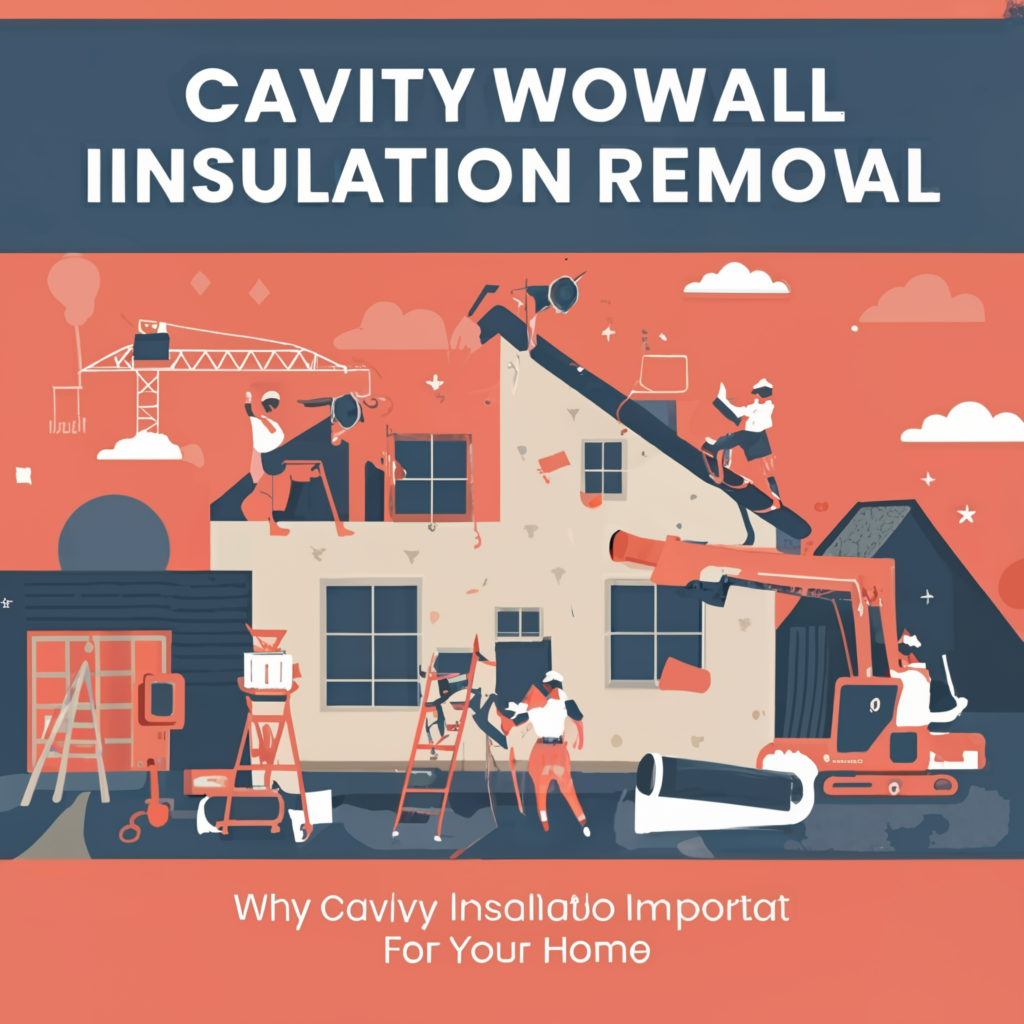Cavity wall insulation removal might not be a topic that immediately springs to mind when considering home maintenance, but its significance cannot be overstated. As homeowners become increasingly aware of the importance of energy efficiency and indoor air quality, the removal of old or damaged cavity wall insulation has emerged as a crucial aspect of home improvement. In this guide, we’ll delve into the intricacies of cavity wall insulation removal, exploring the how, why, what, and who of this essential process.
Why Cavity Wall Insulation Removal Matters
Cavity wall insulation, while beneficial when installed correctly, can pose significant problems if it becomes damaged or deteriorates over time. From moisture retention leading to mold growth to insulation material degradation causing a decrease in thermal efficiency, there are several reasons why removing old or faulty cavity wall insulation is imperative for maintaining a healthy and energy-efficient home environment.
Moisture Management: One of the primary concerns associated with damaged cavity wall insulation is its potential to trap moisture within the walls. This moisture can result from various sources, including leaks, condensation, or inadequate ventilation. When insulation absorbs moisture, it not only loses its effectiveness but also creates an environment conducive to mold and mildew growth. Removing compromised insulation is essential for addressing moisture-related issues and preventing further damage to the structure of the home.
Thermal Performance: Over time, cavity wall insulation may degrade due to factors such as settling, compression, or exposure to moisture. When insulation materials deteriorate, they lose their ability to effectively regulate indoor temperatures, leading to energy inefficiency and increased heating or cooling costs. By removing old insulation and replacing it with newer, more efficient materials, homeowners can improve their home’s thermal performance and reduce energy consumption.
Indoor Air Quality: Poorly maintained or damaged cavity wall insulation can contribute to indoor air quality problems by harboring dust, allergens, and mold spores. As air circulates within the home, these contaminants can be released into the living spaces, potentially causing respiratory issues and exacerbating allergies or asthma. Removing old insulation and addressing any underlying moisture issues can help mitigate indoor air quality concerns, creating a healthier living environment for occupants.
How Cavity Wall Insulation Removal Works
The process of cavity wall insulation removal involves several key steps, each designed to ensure thorough and effective removal of old or damaged insulation materials. While it’s possible for homeowners to attempt insulation removal as a DIY project, hiring a professional insulation removal service is often recommended to ensure safety, proper equipment usage, and compliance with industry standards.
Inspection and Assessment: The first step in cavity wall insulation removal is to conduct a thorough inspection of the walls to assess the condition of the existing insulation and identify any underlying issues such as moisture damage or pest infestations. This assessment helps determine the most appropriate removal method and establishes a baseline for evaluating the success of the removal process.
Removal Technique Selection: Depending on factors such as the type of insulation material, the extent of damage, and the accessibility of the walls, different removal techniques may be employed. Common methods include vacuum extraction, mechanical extraction, and chemical dissolution. Experienced insulation removal professionals can determine the most suitable technique for each specific situation, ensuring efficient and thorough insulation removal.
Safe and Controlled Removal: During the removal process, safety measures must be prioritized to protect both workers and occupants from potential hazards. This includes wearing appropriate personal protective equipment, implementing dust control measures, and ensuring proper ventilation to minimize exposure to airborne particles. Additionally, insulation removal should be conducted in a controlled manner to prevent damage to the surrounding structure and minimize disruption to the home.
Disposal and Cleanup: Once the old insulation has been successfully removed, proper disposal and cleanup are essential to ensure a clean and safe environment. Insulation materials should be disposed of in accordance with local regulations, and any debris or contaminants should be thoroughly removed from the site. A final inspection can help verify that the removal process has been completed to the desired standard.
Who Can Benefit from Cavity Wall Insulation Removal
Cavity wall insulation removal is relevant to homeowners facing various challenges related to the performance or condition of their existing insulation. Whether dealing with moisture issues, energy inefficiency, or indoor air quality concerns, homeowners can benefit from professional insulation removal services tailored to their specific needs.
Homeowners with Older Properties: Older homes are more likely to have outdated or deteriorated cavity wall insulation that may require removal and replacement. By upgrading to modern insulation materials, homeowners can enhance the energy efficiency and comfort of their homes while reducing maintenance costs in the long run.
Homeowners Experiencing Moisture Problems: Excessive moisture within cavity walls can compromise the effectiveness of insulation and lead to structural damage and indoor air quality issues. For homeowners grappling with moisture-related problems such as dampness, mold growth, or musty odors, cavity wall insulation removal offers a proactive solution to mitigate these issues and restore a healthy indoor environment.
Homeowners Planning Renovations or Upgrades: When undertaking home renovations or upgrades, it’s essential to assess the condition of existing insulation and address any deficiencies before proceeding with construction. Cavity wall insulation removal provides an opportunity to improve insulation performance, address moisture issues, and ensure compatibility with new building materials or systems.
Conclusion
In summary, cavity wall insulation removal is a vital aspect of home maintenance and improvement, offering numerous benefits related to moisture management, thermal performance, and indoor air quality. By understanding the importance of cavity wall insulation removal and working with experienced professionals, homeowners can safeguard their homes against potential hazards and create a healthier, more energy-efficient living environment for themselves and their families.
By prioritizing cavity wall insulation removal as part of your home maintenance strategy, you can ensure that your home remains a comfortable and healthy place to live for years to come.
